Maintaining Healthy Fruit Trees in Hot, Dry Climates
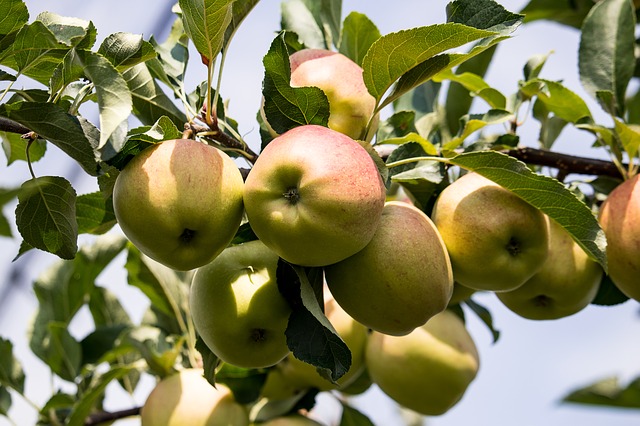
Over the years I’ve spent gardening in the Arizona desert, it’s come with its challenges. I wanted to look at some of the potential hurdles that you may face with keeping fruit trees healthy in hot, dry climates. I hope that through some of my experiences, it’ll help you to prevent some of the possible problems that can arise growing fruit trees in a challenging climate.
Drought
This is the obvious major obstacle when trying to grow fruit trees in a hot, dry climate like the Southwest. We get an average of 8 inches of rain per year in the Phoenix, Arizona area.
With that being said, it’s critical to provide the proper irrigation for your fruit trees.
You will want to establish some sort of system which may consist of using hoses, drip system, or flood irrigation.
As long as you have some sort of set-up that works for you and that gets the job done.
I’ve personally been using hoses for several years, which is a lot of work, but has some advantages to it.
When it comes to watering fruit trees, typically watering deeply, which means slowly for long periods of time, works best.
Wind
We have monsoon weather here in the Arizona desert which means high winds.
I generally don’t like to stake my fruit trees, because I believe that winds can help create a strong root system, but for young newly planted trees you sometimes just have too.
Our winds can come strong and fast called microbursts creating 50 mph winds.
Think of a hair dryer blowing directly on your plants, that’s what our hot, dry winds can be like. It’s important to keep your trees watered following any sort of windstorm.
Some tropical trees really get thrashed in our winds like bananas, soursop, lychee, etc. So plant them in sheltered areas surrounded by other trees or structures.
Pests
Bugs have always been a challenge for gardeners no matter where you garden. I have always been against using pesticides on anything I grow.
One of the biggest things that I’ve found to counter pests is to grow healthy plants. If you’re creating a good fertile soil, by feeding, and properly irrigating, it’s going to create a healthy plant that is more able to fend off pests.
Here are some of the common pests I find in my backyard:
Aphids- These are one of the more common pests found. Typically if you see ants going up and down your plant, it’s a good indication that aphids are around. The two insects work together to get what they want. The aphids suck the sap out of the plants and the ants feed of the excretions from the aphids. Aphids tend to feed on new tender growth. If it’s a small amount of aphids, you can typically just spray them off with a hose or just kill them with your fingers. I’ve planted dill around plants that aphids tend to like and it helps because dill attracts all the aphids.

White Flies- Found on the underside of plant leaves and they suck nutrients out of the leaves of plants. They can quickly become a huge infestation. They love watermelon, cucumber, squash, green beans, peas, cabbage, broccoli, leafy greens. I haven’t had much of an issue with white flies on my fruit trees.

Thrips- These almost microscopic pests really like citrus. They also feed on the plant juices from new growth, which can cause some of the leaves to take on a distorted shape. Most of the damage is cosmetic. It seems they also like stone fruit trees and mango.

Squash Bugs- These guys will feed on plants in the squash family like cucumber, melons, squash, zucchini, and pumpkin. They cause damage to leaves of these plants and can even kill the plant. I haven’t had any issues with these on fruit trees.
Mealy Bugs- This has been a more common problem on my tropical fruit trees. The almost look like a white powder or cotton-like appearance on the undersides of leaves. I usually just scrap them off when I find them. They can suck the life out of leaves they are feeding on.

Cutworms- If you’ve ever come out to your garden and noticed a plant lying on the ground looking like it was chopped at the base, the most likely culprit is cutworm. They can be very frustrating to deal with and really like tomato plants.
Leaf Footed Bug- These guys are major problems for Pomegranates in our area. They are very difficult to control and seem to really be attracted to Pomegranates. The will pierce the skin of the pomegranate and feed on the juice causing the fruit to rot. They can also feed on other fruits. It’s a good idea to clean up fallen fruit, as it can attract these bugs. Organza bags, which are small mesh-like bags can help protect the fruit.
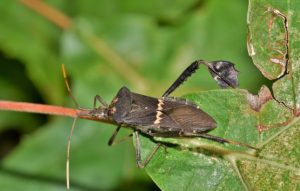
Cabbage Worms- These are small green worms or caterpillar like insects that love to feed on leafy greens, cabbages, broccoli, and things like that. I have found them on some of my fruit trees, they especially like guava. If you have holes being eaten out of the leaves of a plant look around the undersides of leaves nearby and you’ll probably find one of these.
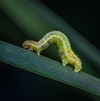
Katydids- These really like to feed on Jujube leaves in the spring. If you have a jujube and are wondering why some of the new growth looks like it’s being eaten, it’s probably from a Katydid.
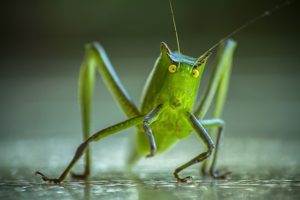
Cicadas- I found some weird looking groves in some of the branches of a few of my fruit trees. After doing some research, I found that female cicadas will tunnel into a branch to lay her eggs. The eggs then drop into the soil below.
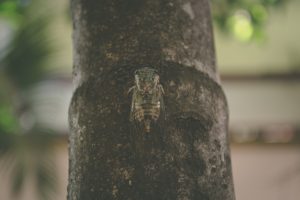
If you aren’t using pesticides and are creating a healthy ecosystem then you will find a lot of the beneficial bugs. These bugs will help to regulate the population of the bad bugs. So hopefully you are seeing these guys in your backyard gardens.
- Lace Wing
- Praying Mantis
-
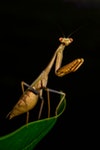
- Assassin Bugs
- Lady Bugs

If you have no chance, but to spray try something organic first.
Neem oil tends to be fairly effective and is what I primarily use.
Check out the Garden Guy, he has a lot of great recipes for making organic pesticides or plants that repel pests.
Diseases
Thankfully, I haven’t had to deal with many issues with disease. Some of the more common ones I’ve heard of in our area is Texas Root Rot, crown rot, Canker, root rot, and peach holeshot.
Some of the fungal diseases can be treated by copper sprays, which I’ve used on some of my stone fruit trees.
Things like canker or Texas Root Rot, you pretty much have to scrap the tree. Signs will include things like amber-colored sap coming out of the trunk and branches while the tree quickly declines.
I try to keep the trunk clear of mulch or continuous moisture. Keep the root flare exposed to oxygen.
Root rot tends to be a problem with overwatering, which can be easy to do for container fruit trees and some fruit trees are more susceptible.
High PH/Salt Burn
Our soil is high in PH and our city water compounds the problem. You can see sometimes see salts on the top layer of the soil.
Excess salts aren’t good for fruit trees. You’ll tend to see leaf tips turn brown or black from the salt burn. The best thing to do is to periodically flush the salts out by water for a long period of time.
Most fruit trees like a neutral or slightly acid soil, so when the PH continues to rise, it makes it difficult for the plant to take in nutrients.
Iron deficiency is a common sign of this in fruit trees in high PH soils. The leaves will start looking chlorotic, meaning they almost have bleached out yellow look.
Occasional applications of soil Sulphur, using organic matter like compost, and chelated iron are ways I use to help with PH issues.
Birds
If you’ve ever been waiting patiently for the piece of fruit on the tree to ripen, only to find it missing or with a big hole in it one day, you can feel my pain.
Often, the birds are eyeing up the fruit along with you, and they tend to be quicker to it or just a little less patient than us.
Organza bags can again help in this scenario or bird netting. Also, hanging shiny objects to scare the birds away can work.
Sun
All plants need sunlight, but in our extremely hot, dry climate it can be too much of a good thing for some of our fruit trees.
A lot of newly planted fruit trees will benefit from putting up some sort of shade structure. You still want the tree to get sunlight, just to cut out some of the intense UV rays.
I use shade cloth around 30-50%.
Check out some of my planting guides on various fruit trees. Some will do great in full sun, others will need to be in the partial sun.
Cold
Depending on what type of fruit tree you are growing, will depend a lot on winter care.
Stone Fruits are deciduous trees, meaning they go dormant and lose their leaves in the winter. They actually need a certain amount of chill hours below 45 degrees to produce fruit the following season.
These are your trees like peaches, plums, apples, pears, cherries, jujube, apricots, pomegranates, and nectarines. These trees will be fine in the cold.
Any subtropical or tropical fruit trees can handle some cold to a certain extent.
If you are growing these types of trees you may need to take an extra measure like building a structure to protect from frost or growing in a container to move inside.
Please comment below on anything you enjoyed from this post.
